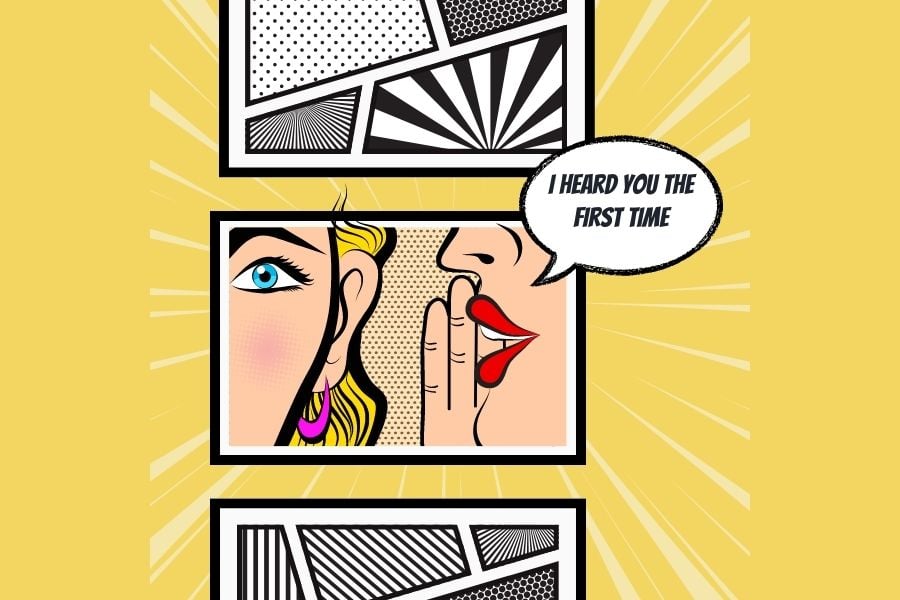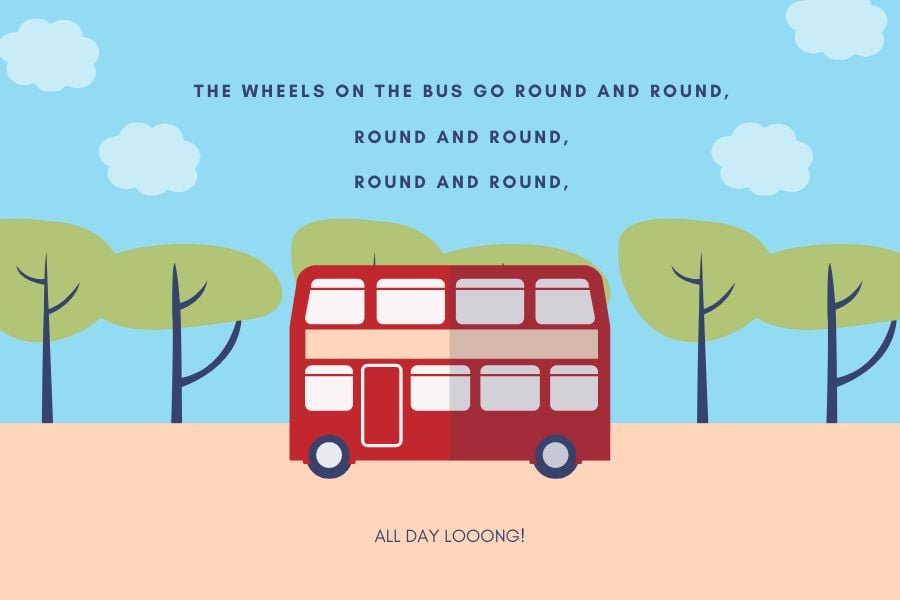Have you come across the term “tautology” lately and wondered what it is?
Or are you on a mission to improve your writing and want to learn to avoid it?
As a freelance writer, I’m right there with you!
So here’s the deal: Lots of popular phrases are tautologies. And once you know, they can drive you crazy!
To tell you the honest truth…
They’re giving away free tickets…
But being able to identify them means you at least won’t drive your readers crazy.
In this post I’ll look at a bunch of tautology examples and dissect them so you can spot them a mile away.
But first, let’s take a look at the definition.

What Is A Tautology?
In literary terms, a tautology, is simply repeating oneself.

You can repeat yourself in many ways (ask my Mum), but there are a few defined types of tautology.
In grammar, it’s repeating an idea, statement, or word — but using different words, or synonyms.
In rhetoric and logic, a tautology is a little like a circular argument. It’s something that’s unconditionally true by virtue of logic.
Let’s take a closer look at the different tautologies, with some examples.
The Verbal Tautology
A verbal tautology is a grammatical redundancy — you repeat the same idea but word it differently.
For example, asking customers to:
“Prepay in advance.”
They can pay in advance, or they can prepay. But you don’t need to say the same thing twice!
Or this one:
“I went to see him personally.”
You might add “personally” for emphasis. But it doesn’t add anything. If I went to see him, it must have been personally.
As we’ll see later, a verbal tautology can be used to add emphasis and rhythm to your writing.

However, a clear, concise sentence is often the better choice.
The Logical Tautology
A logical tautology is a statement that is always true — it covers all scenarios.
For example:
“You either have blue eyes or you do not have blue eyes.”
“You are brave or you are not brave.”
“I will get in trouble or I will not get in trouble.”
These statements are always true, because when you put both halves of the sentence together, there’s no possibility of it not being true. Therefore, it feels redundant, just like a verbal tautology.
10 Examples of Tautology You Didn’t Even Know You Used
Now that you’ve seen what the dictionary says, let’s take a closer look at some tautologies that you’d hear in everyday conversations.
Chances are, your own language is filled with them.
Recognize any pet favorites?
Logical Tautology Examples
While these logical statements may be popular colloquial sayings, they don’t add meaning or deeper clarity to your writing.
“It is what it is.“
This is a logical tautology because it uses the repetition of “it is” in a simple statement that is universally true about whatever “it” is. But repeating it doesn’t add any information.
As Nina Simone (and many others) said:
You’ve got to:
“Do what you’ve gotta do”.
This is the same type of logical tautology.
But what is that thing you’ve got to do?! The meaning is implied in the context. What you’re really saying is you have no choice in the matter.
Logical tautologies are often used more deliberately than verbal tautologies.
Verbal Tautology Examples
We use a ton of verbal tautologies in our local dialects and speech mannerisms. Many of us use tautological redundancies to add emphasis, rhythm, variety, or even a splash of local color to a phrase.
“I personally made this card for you with my own hands.”
“The soggy ground was wet and covered in mud.”
“The teacher assisted me by helping me complete the assignment.”
“Enjoy your added bonus!”
“Be careful, there is a lot of frozen ice on the road!”
“She always over exaggerates.”
“They hiked to the summit at the top of the mountain.”
“The hotel room wasn’t great, but it was adequate enough.”
If you live in a community where these tautologies are common in local chit chat, by all means join in and have some fun!
When you’re writing though, choose your words carefully. It’ll make for clear and concise writing.
5 Tautology Examples That’ll Crack a Smile
Some tautologies are so blatant they’ll likely tickle the corners of your mouth. You might even bless us with a real smile or a teenage eye-roll!
We’ve picked a few famous examples for your enjoyment:
“A person’s a person, no matter how small”
— Horton Hears a Who, Dr. Suess
“Discovered by Pooh, Pooh found it.”
— Winnie the Pooh, A.A. Milne
“They are simply going to have to score more points than the other team to win the game.”
— John Madden
“Our nation must come together to unite.”
— George W. Bush
“It’s deja vu all over again.”
— Yogi Berra
Yogi Berra’s famous quote is one of my favorites.
It’s not just deja vu (French for already seen). It’s not just deja vu again.
It’s deja vu all over again.
It kills me.
Which one do you like best?
If They’re So Bad, How Come Shakespeare Used Tautologies?
The great masters’ words have delighted us for centuries. They used many literary devices to express their ideas.
Tautology is one of them.
It can be especially effective in children’s literature, poetry and song lyrics.

We can also use tautologies in dialogue, as a device to develop a character’s thoughts and personality.
The point is, there is a point (see?) to the tautology — for example to charge the words with emotional impact, or to make an idea unforgettable.
3 Great Tautology Examples in Literature
We’ve been discussing tautologies, primarily in favor of not using them.
Now you’re going to see three skillful uses of tautology that add rhythm and punch to the writing.
“And as for me, if I am bereaved of my children, I am bereaved.”
— Genesis 43:14
This epic biblical tautology brings home Jacob’s helpless plight.
If he stays, the Egyptian prime Minister keeps his beloved youngest son in prison.
If he leaves to Egypt with his other sons, he puts the whole family at risk.
This is the moment of peak anguish in the story.
In the ancient Hebrew culture, there was nothing worse than being bereaved of your children. So, the author uses a tautology to skyrocket the impact of this statement.
“To be or not to be, that is the question.”
— Hamlet, William Shakespeare
This famous logical tautology finds Hamlet pondering life and death.
More than 400 years later, these words remain an icon of English literature.
Shakespeare was a master at conveying big ideas, expressing the dramatic mood in each scene, and he managed to voice it all in iambic pentameter!
“I’m willing to tell you. I’m wanting to tell you. I’m waiting to tell you.”
— Pygmalion, George Bernard Shaw
Shaw used tautology in this line to give Alfred Doolittle a poetic air — to impress Professor Henry Higgins with his natural poetic gift.
Was Higgins impressed? Well, that’s up to the audience to decide.
Why Music Is Tautological Anarchy
Poetic forms follow a different set of rules, to create rhyme and rhythm. So, poets and lyricists can be looser with the rules than other writers.
Song lyrics use filler words to fit the structure of the song. For example:
“I love you. I really do.”
It sounds redundant in other kinds of writing, but is perfect in a song.
Let’s look at a few examples.
Kiss’s hit song “Shout it Out Loud” uses a verbal tautology in the chorus.
“Shout it, shout it, shout it out loud!”
— Kiss
“Shout it out loud” is a verbal tautology because, if you shout something, you must invariably use a loud voice. So “out loud” is redundant.
In the context of the song, this “needless” repetition makes for a fun, pulse-pounding chorus, and Kiss fans love it!
The Beatles have tons of tautology examples in their songs. “All You Need is Love” is full of logical tautologies like this one:
“There’s nothing you can do that can’t be done. There’s nothing you can sing that can’t be sung”
— The Beatles
These are logical tautologies because they express a thought in a statement that’s always true.
The song “Qué será, será” uses the same technique, but kicks it up a notch by using a different language to repeat the thought.
“Qué será, será. Whatever will be, will be.”
— Livingston & Evans
If you write poetry and song lyrics, be deliberate about using tautologies to make your words stronger, rather than weaker.
Which Tautology Examples Do You Love to Hate?
You’ve seen how a tautology can sound more like a broken record than an emphatic literary device.
And how the literary masters have used tautologies to make a meaningful impact on their audience.
So, here’s the bottom line:
- Write clear, concise sentences.
- In general, eliminate tautologies from your writing.
- Only use a tautology when it gives your words greater impact.
Whatever you’re writing, use the most powerful words you can — and try to wield the power of tautology wisely.







